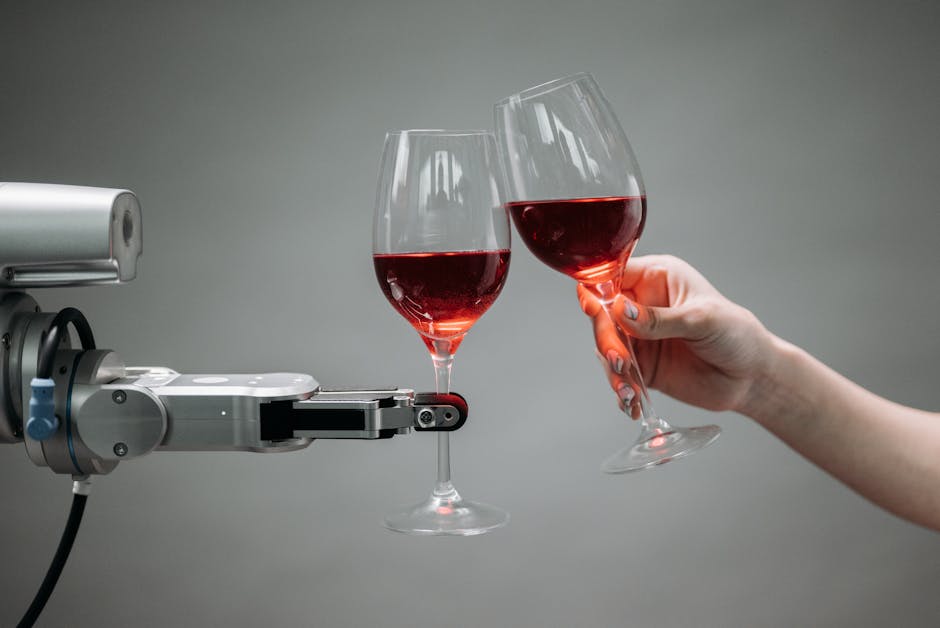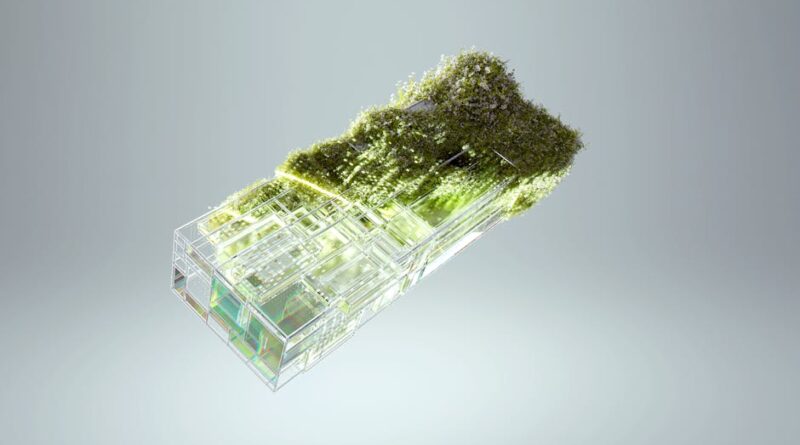The Future of Edge Computing and IoT Integration
In today’s digitally driven world, the Internet of Things (IoT) and edge computing are two transformative technologies that are shaping the way we interact with data and devices. As IoT devices continue to proliferate in various industries, the need for efficient data processing and real-time analytics has become paramount. This is where edge computing comes into play, offering a decentralized approach to data processing that brings computation closer to the source of data generation.
But what does the future hold for the convergence of edge computing and IoT? How will these technologies evolve and intersect to create new opportunities and challenges? In this article, we will delve into the future of edge computing and IoT integration, exploring the potential applications, benefits, and implications of this dynamic duo.
The Rise of Edge Computing

Edge computing is a distributed computing paradigm that brings computation and data storage closer to the location where it is needed, rather than relying on a centralized data center. This approach offers several advantages, including reduced latency, improved data security, and increased bandwidth efficiency. As the volume of data generated by IoT devices continues to grow exponentially, the need for edge computing solutions has never been more pressing.
One of the key drivers behind the rise of edge computing is the proliferation of IoT devices in various industries, from manufacturing and healthcare to transportation and agriculture. These devices generate massive amounts of data that need to be processed and analyzed in real-time to extract valuable insights and drive actionable outcomes. By moving computation closer to the edge of the network, organizations can achieve faster response times, lower operational costs, and improved scalability.
For example, in the manufacturing industry, edge computing enables predictive maintenance of machinery by analyzing data from sensors in real-time to detect anomalies and potential failures before they occur. This proactive approach helps minimize downtime, reduce maintenance costs, and optimize overall equipment effectiveness. Similarly, in the healthcare sector, edge computing can support remote patient monitoring and telemedicine applications by collecting and analyzing vital signs and patient data at the point of care.
The Convergence of Edge Computing and IoT

As the adoption of IoT devices continues to grow, the integration of edge computing has become essential to harness the full potential of these interconnected devices. By processing data at the edge of the network, organizations can overcome the limitations of traditional cloud computing, such as latency issues, bandwidth constraints, and data privacy concerns. This convergence of edge computing and IoT is driving innovation across various industries and unlocking new possibilities for data-driven decision-making.
One of the key advantages of combining edge computing with IoT is the ability to analyze data in real-time, enabling organizations to derive actionable insights and respond quickly to changing conditions. For example, in the transportation sector, edge computing can be used to optimize traffic flow, improve vehicle safety, and enhance the overall passenger experience. By deploying edge devices along highways and intersections, traffic patterns can be analyzed in real-time to reduce congestion, prevent accidents, and streamline transportation logistics.
Moreover, the integration of edge computing and IoT is revolutionizing the way we interact with smart devices and services in our daily lives. From smart homes and wearable devices to autonomous vehicles and smart cities, the possibilities are endless. By leveraging edge computing capabilities, IoT devices can deliver personalized services, automate routine tasks, and enhance user experiences in ways that were previously unimaginable.
The Future Applications of Edge Computing and IoT Integration

Looking ahead, the future of edge computing and IoT integration holds immense potential for transformative applications across various industries. From healthcare and retail to agriculture and energy, the possibilities are endless. Let’s explore some of the key future applications of this dynamic duo:
1. Healthcare
In the healthcare sector, edge computing and IoT integration can revolutionize patient care and medical diagnostics. By connecting wearable devices, medical sensors, and electronic health records to edge computing platforms, healthcare providers can monitor patients in real-time, analyze medical data, and deliver personalized treatment plans. This approach can enhance the efficiency of healthcare delivery, improve patient outcomes, and reduce healthcare costs.
2. Retail
In the retail industry, edge computing and IoT integration can transform the shopping experience for customers and retailers alike. By leveraging IoT devices such as beacons, RFID tags, and smart shelves, retailers can track inventory levels, analyze customer behavior, and deliver targeted promotions in real-time. This data-driven approach can optimize store operations, increase sales, and enhance customer engagement both online and in-store.
3. Agriculture
In the agriculture sector, edge computing and IoT integration can help farmers optimize crop yields, reduce water usage, and improve sustainability. By deploying IoT sensors, drones, and autonomous tractors in the field, farmers can monitor soil moisture levels, analyze weather patterns, and automate irrigation systems. This precision agriculture approach can increase productivity, minimize environmental impact, and ensure food security for future generations.
4. Energy
In the energy sector, edge computing and IoT integration can revolutionize the way we generate, distribute, and consume electricity. By connecting smart meters, grid sensors, and renewable energy sources to edge computing platforms, energy companies can optimize grid operations, predict power outages, and enable demand response programs. This data-driven approach can improve energy efficiency, reduce carbon emissions, and accelerate the transition to a sustainable energy future.
Challenges and Considerations

While the future of edge computing and IoT integration holds great promise, there are several challenges and considerations that need to be addressed to ensure successful implementation and adoption. Some of the key challenges include:
1. Security
Security is a major concern when it comes to edge computing and IoT integration, as the decentralized nature of edge devices can increase vulnerabilities and expose sensitive data to potential threats. Organizations need to implement robust security measures, such as encryption, authentication, and access controls, to protect data at the edge and ensure the integrity of IoT devices and networks.
2. Data Privacy
Data privacy is another critical consideration in the era of edge computing and IoT, as the collection and processing of personal data raise ethical and legal concerns. Organizations must adhere to data protection regulations, such as GDPR and HIPAA, and obtain user consent for data collection and processing activities. By implementing privacy by design principles, organizations can build trust with customers and demonstrate their commitment to data privacy.
3. Interoperability
Interoperability is a key challenge in the integration of edge computing and IoT devices, as different devices and protocols may not always communicate effectively with each other. Organizations need to define standards, protocols, and interfaces that enable seamless interoperability between edge devices and IoT platforms. By promoting open standards and collaboration within the industry, organizations can overcome interoperability challenges and unlock the full potential of edge computing and IoT integration.
Common Misconceptions
Despite the potential benefits of edge computing and IoT integration, there are several common misconceptions that persist in the industry. Let’s debunk some of these myths:
1. Edge Computing is the Same as Cloud Computing
One common misconception is that edge computing is the same as cloud computing. While both technologies involve data processing and storage, they differ in terms of location, latency, and scalability. Edge computing brings computation closer to the source of data generation, whereas cloud computing relies on centralized data centers. By combining edge computing with cloud computing, organizations can achieve a hybrid approach that leverages the benefits of both technologies.
2. IoT Devices are Not Secure
Another common misconception is that IoT devices are inherently insecure. While it is true that IoT devices can be vulnerable to security threats, organizations can implement security best practices, such as encryption, firmware updates, and network segmentation, to mitigate risks and protect IoT devices from cyber attacks. By adopting a proactive approach to security, organizations can build resilient IoT ecosystems that safeguard data and devices from potential threats.
Conclusion
To wrap things up, the future of edge computing and IoT integration holds immense potential for transformative applications across various industries. By leveraging the power of edge computing to process data at the source and integrating IoT devices to collect real-time data, organizations can unlock new opportunities for innovation, efficiency, and growth. As we look ahead, it is clear that the convergence of edge computing and IoT will continue to drive digital transformation and reshape the way we interact with technology in the years to come.
As we navigate the evolving landscape of edge computing and IoT, it is essential to address the challenges and considerations that come with this transformative technology. By prioritizing security, data privacy, and interoperability, organizations can build robust and resilient edge computing ecosystems that deliver value and drive positive outcomes for stakeholders.
In conclusion, the future of edge computing and IoT integration is bright, promising a world of interconnected devices, real-time analytics, and personalized experiences. By embracing this technological convergence and exploring new use cases and applications, organizations can stay ahead of the curve and harness the full potential of edge computing and IoT for a smarter, more connected future.




